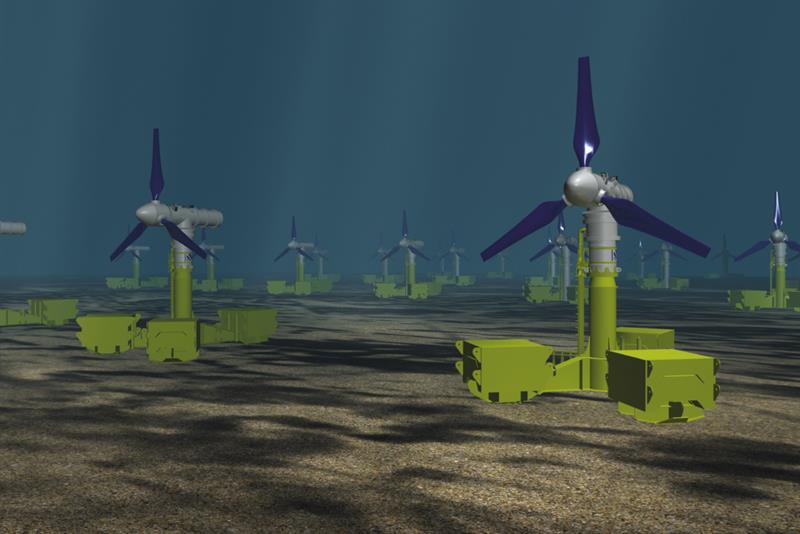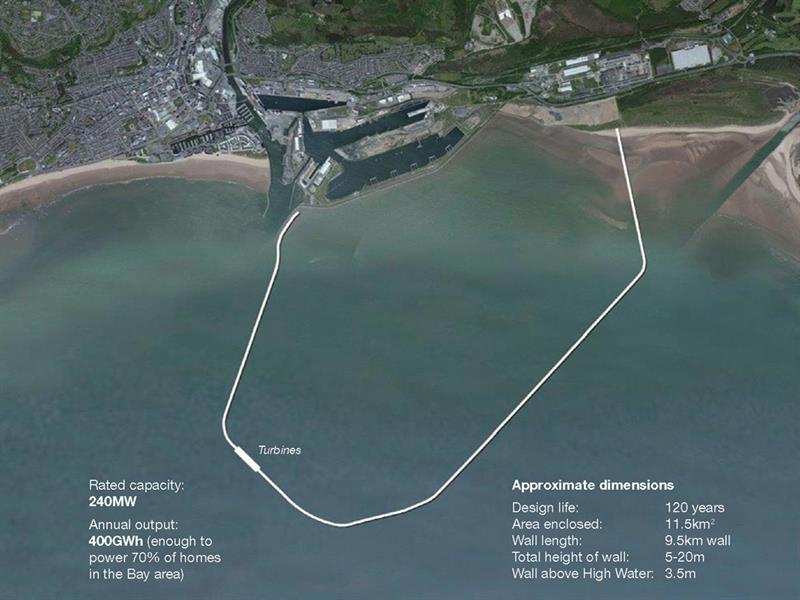Producing adequate power is vital to daily life, yet the process is largely neither clean nor efficient. Indeed, in many parts of the world, smog from coal fired power stations remains a visible reminder of the problem. And, it is not just the threat to human health, all kinds of ecological systems are suffering as a consequence. Despite some sceptics dismissing evidence on climate change, pollution and its adverse effects are undisputed.
The past decade has seen the rapid roll out of wind farms both in and around the UK, a move mirrored throughout much of Europe. It is the first major step in cleaning up power production. Despite a slower start than many would have liked, last year wind based renewable electricity made up 11% of generated power.
Despite the success, however, a fundamental problem remains: the baseload requirement. Baseload is the minimum level of power demand on the electrical network over a 24 hour period. And since baseload power sources are those plants that generate continuous and dependable power – wind turbines are never likely to take over completely.
“The UK baseload requirement comes from nuclear,” said Peter Oram, global renewables sales at General Electric Power Conversion. “You can’t cycle it, it is on or off. But, overnight you find there is no demand.”
As electricity can’t be stored in volume, if it is not used at the point of production, it is lost. And with plants only shutting for maintenance, baseload thermal power plant operations can be inherently inefficient.
The unpredictability of wind combined with the need to keep nuclear plants on, means the current infrastructure is far from ideal. But, not all renewable sources of power are created equally.
For years many have questioned why tidal and wave power have not featured more highly in the mix. In all probability it’s likely they will, once the engineering is more fully developed and better understood. Offshore wind power has had its fair share of unforeseen maintenance issues, having equipment underwater only compounds the difficulties.
Take a step back, though, and the global renewables picture is very different. Producing power from moving water is actually the planets biggest source of renewable energy by some margin. Hydro plants are common, reliable, efficient, well understood, and clean. The trouble is, not everywhere has the nature channels and lagoons to exploit the resource. So then, why not build them instead?
This is the principle being put forth by Tidal Lagoon Power. The company wants to build artificial lagoons in areas that have high tidal ranges. It is currently developing its first project in Swansea Bay to show the principle, but wants to have lagoons built all around the UK and beyond.
The concept is simple, as water floods into the lagoons it rotates turbines that produce electricity. This process is mirrored at lower tides as the water is released out of the lagoon producing predictable and reliable clean power. What’s more, due to regional differences in the time of high tide and low tide, the system can made up of a series of lagoon networks that can produce 24 hour power.
“Tidal is the new baseload,” said Oram. “Nuclear is about 18GW in the UK, so if you follow that tidal pattern around the UK you almost get yourself a baseload replacement for nuclear, but this lasts 120 years.”
General Electric is partnering with Tidal Lagoon on the project, developing the turbine systems and power electronics that will make the system smart, flexible, and responsive to grid demand. GE brings years of operational experience in maintaining thermal and hydro power plants to give the project technical soundness and genuine commercial credibility.
At the heart of this work is GE’s large induction generators and variable speed drives (VSD) based on its medium voltage drive technology and hydro turbine technology supplied by partner Andritz Hydro. The equipment is well proven across multiple industrial and renewable energy applications such as onshore and offshore wind, oil and gas and marine.
“We are able to connect remotely to our plants and every single inverter,” said Oram. “We can then take that data, feed it back to optimise operations, and improve products in the future.”
The UK is currently in transition with eight nuclear reactors and nine coal fired power stations closing over the next eight years. It means 21,000 MW, around one quarter of total installed capacity, will be lost.
This has prompted the Government to commit to a new generation of nuclear reactors, potentially by foreign contractors. While nuclear is certainly a low carbon option, the nuclear waste generated is far from environmentally inert. Tidal Lagoon, however, has ambitions to offer an alternative renewable option that will last longer, and potentially fill the energy gap.
Chief executive of Tidal Lagoon Power, Mark Shorrock, said: “Our ambition is predictable baseload renewable energy. Our first project at Swansea Bay is playing with 10m high tides. The concept is to build a big break water wall, 9.5km long. That is 11.5km2 of water that we impound.
“We put generators between the lagoon and ocean, and wait three hours for the tidal difference. Then we exchange a 100m3 of water over the next four hours through turbines as we empty the lagoon. We generate electricity in the same way when water comes in. We can also delay generation by up to 90 minutes.”
Swansea Bay will use 16, 7.5m turbines, giving 320MW of installed capacity and 14 hours of reliable generation every day. At an expected cost of £1 billion, many have pointed out a similarly priced gas-fired power station could produced as much as 1000MW. Tidal Lagoon argues that purchase cost can be deceiving and it is through life cost that really shows the true comparison.
Fuel costs for a gas fired power plant over a 25 year life are high, volatile, and dependant on supply from other countries. It is also polluting and needs significant maintenance. Tidal Lagoon states its hydro powerstations have an operational life span of 120 years, with no major refurbishment needed for the first 50 years of operation. In short, far less maintenance and zero fuel costs.
“You put in this infrastructure, and it goes and goes,” said Shorrock. “And we are adamant we are not making these turbines in China or the Far East. We want to source, use the expertise and manufacturing base that is here in UK for as much of this project as possible.
“We have a fundamental theme in the company that is we have to be reverent towards nature in what we do. To try and live in harmony with it. We want the birds to still live there, the molluscs and nature to thrive.”
It is clear that Shorrock doesn’t want this to be a one off project and he has big plans for its expansion. “Swansea Bay, we hope, gives birth to an industry,” he said.
With construction of the break water due to start in 2017, and operation due to start in 2020, it remains to be seen if this prototype project will deliver on its promises and live up to high expectation.

Not alone
However, the Tidal Lagoon project is not the only tidal renewable energy project that is gaining traction. The MeyGen Project, for example, claims to be the largest planned tidal energy project in the world. Here, energy generation takes perhaps the more traditional form of turbines placed on the ocean floor, a concept known as tidal stream generation. As tides flow in and out of channels, they turn the turbines and generate electricity in much the same way as wind turbines.
The turbines are being produced by Atlantis / Lockheed Martin and Andritz Hydro Hammerfest and the project is scheduled to install four 1MW turbines in 2016. These will prove the concept and power approximately 3000 homes, before the array is scaled up to 80+ turbines, and finally, in early 2020, the remaining turbines to make up the 396MW of capacity.
The MeyGen array will be located 2km off the north Caithness coast within the Inner Sound of the Pentland Firth. The area is recognised as a highly active site for tidal flows with a maximum tidal current speed of 5m/s.
Atlantis chief executive, Tim Cornelius, said: “We are witnessing the transformation of a sector. MeyGen is one of the most exciting and innovative renewable energy developments in the world, marking the long-awaited arrival of tidal stream generation as a serious, large-scale player in global energy markets.”
Suppliers step up
The tidal renewable development has required many in the supply chain to procure equipment and sub systems that are capable of withstanding the underwater environment.
“There is a lot customisation in MeyGen,” said Callum McConnell, global business development manager, at supplier to the project Parker Hannifin. “But we are trying to do it with a many standard components as possible.”
Parker has played a critical part in providing many components including gearbox lubrication and thorough sealing of equipment. However, a major part of keeping the underwater turbines moving has been the condition monitoring systems.
“Condition monitoring plays a big role in the project,” said McConnell. “We need to know what is happening inside the nacelles, with the lubrication, hydraulics and power electronic systems.
“It allows the operator to more easily predict problems. You might see water in the oil, or metal particles, and that will tell a certain story about what is going on so you can accurately predict how long it might last before something fails. If you know when something is going to fail, it allows you to plan ahead and not wait for unscheduled breakdowns.”
Despite the ongoing wait for the broader roll out of renewables, it looks as if many of the known problems of tidal energy are being overcome. However, this is all before the build phase has even started. It is an anxious time, no doubt, for engineers as this is when the unknown problems tend to arise. In the short term expect some increases in cost and delays in the project. But long term, expect a cheap and clean power. A fair compromise?
| Fact File: Tidal Lagoon vs MeyGen | Swansea Tidal Lagoon | Pentland Firth MeyGen |
| Turbines: | 16 x 20MW | 269 x 1.5MW |
| Capacity: | 320MW | 398MW |
| Start: | 2017 | 2015 |
| Complete and operational: | 2020 | Early 2020s |
| Life: | 120 years | 20-25 years |
| Tidal range / flow | 8.5m | 5m/s |
| Homes powered: | 155,000 | 175,000 |
| Cost: | £1 billion | £1.5 billion |
Despite strong initial backing, the Government’s stance has softened significantly in recent months. The Prime Minister admitted last month his enthusiasm had been ‘reduced’. The reservations were reportedly related to engineering concerns raised around the turbines, and the merit of the Lagoon’s power producing capability. While the site is a prototype to prove the concept, in practice, any significant unforeseen side effects would spell disaster for the £1 billion project. The Government does not want the lagoon to turn in to a money pit and political embarrassment. The turbines are developed off the back of experience gained in hydro generation facilities, but there is lack of practical measurement using them in this way. Using the turbines to generate power in two directions assumes equal efficiency, yet some experts have called this a theoretical prediction that will not hold up in real operation. Tidal Lagoon Power said questions on the engineering and environmental impact had been addressed in depth by experts through a robust planning and validation process. |


 Tidal Lagoon – not without controversy
Tidal Lagoon – not without controversy


